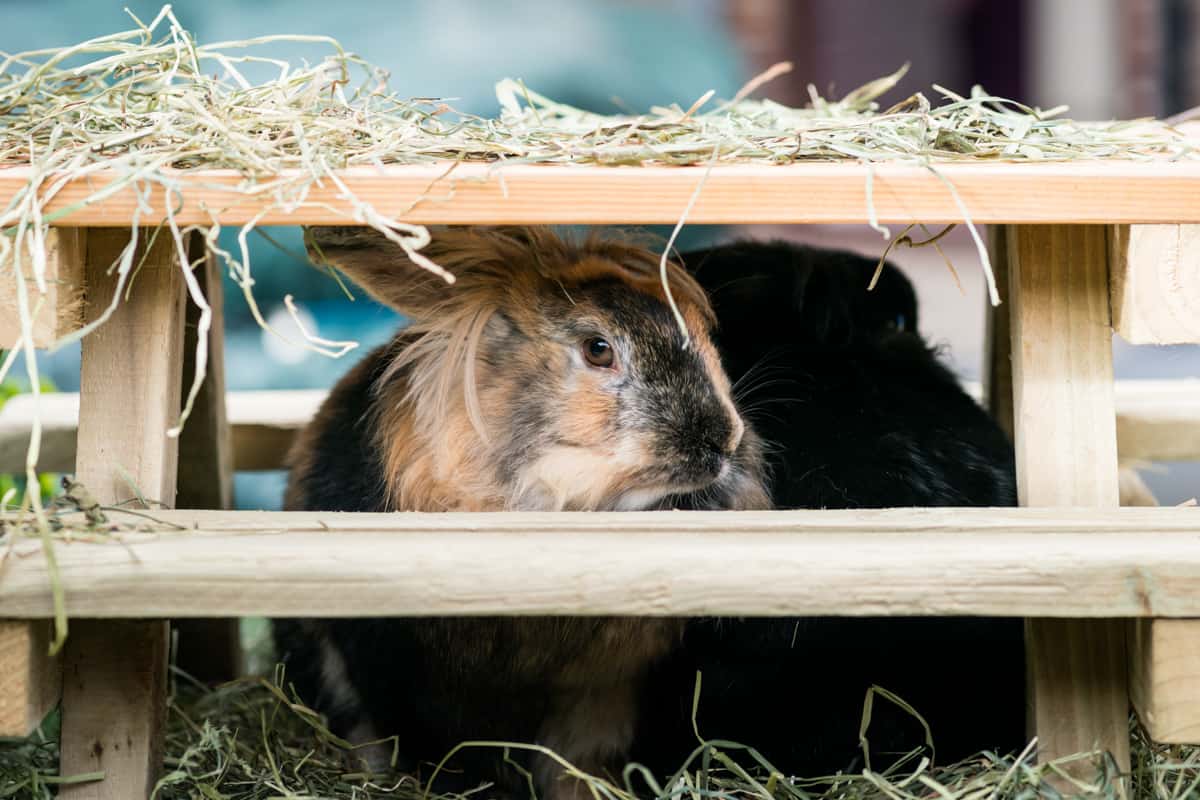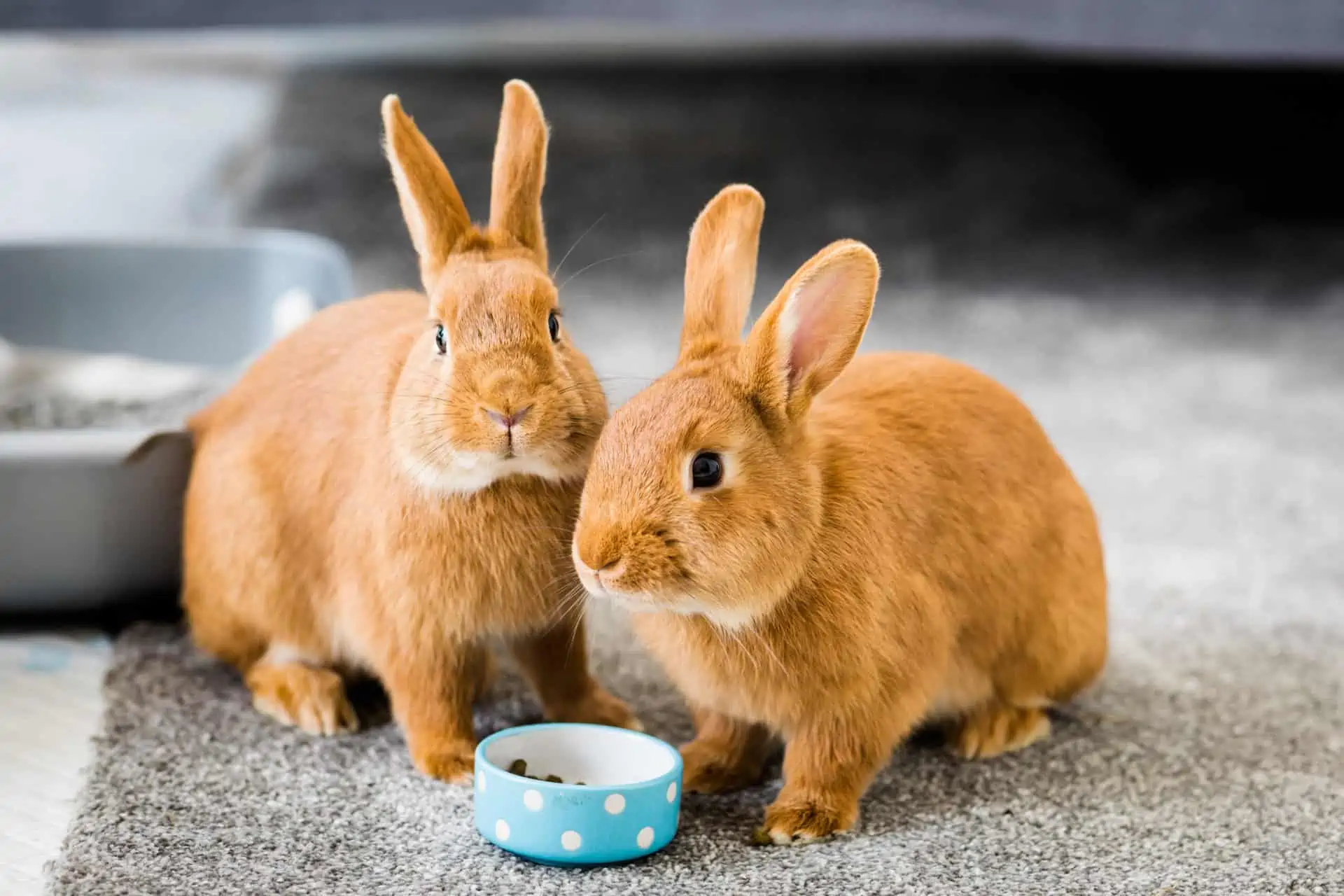Housing your rabbits outdoors
Give your rabbits lots of space
The minimum space requirement for two bonded rabbits is 3m x 2m x 1m high. This applies to rabbits who live outdoors and indoors, and should be one continuous space so your rabbits can run the full 3m length uninterrupted.
But remember, this is the minimum requirement. The more space the better for rabbits. In the wild they would have access to large, open expanses, as well as a system of underground tunnels, called warrens. The more we can emulate in our back gardens, the better.
Some examples of outdoor rabbit housing include:
Room to run! Our rabbits’ exercise area
Just like us, rabbits need to exercise. They’re really active, curious animals, and the ability to move around provides them with mental stimulation as well as health benefits. Without adequate exercise, “the skeletal frame of a pet rabbit suffers and they could become prone to obesity.”
To help your rabbits get their daily exercise, their sleeping area should be permanently attached to their exercise area, and they should always have access to hop in and out as they please. Imagine their rabbit hutch is like their burrow in the wild. This is the area they’ll likely cuddle up in and use to sleep. In the wild, when they want to move around more freely, rabbits will pop out of their burrow and up into the wide world. Therefore, we need to allow our pet rabbits to do the same.
Give them permanent access to their exercise area so they can choose how they spend their time. With a hutch, equipment like rabbit tunnels, for example by Runaround, are a great way to keep enclosures connected. If you are converting a garden shed or aviary, make sure the overall footprint is at least 3m x 2m x 1m high, and the whole space is available.
Where is it going to go? Choosing the right location for your rabbits’ outdoor housing
How do I protect my rabbits’ outdoor housing from the weather?
It’s important to make sure your outdoor rabbit set up is weatherproof. Putting it out of direct sunlight and out of the wind will help keep your rabbits cool in the summer and warm in the winter. You can buy insulated covers for the winter months, and attach legs to their sleeping area to help keep the water out.
As you’re doing your daily spot clean it’s a good idea to check the integrity of their housing. Check it’s still sturdy, there’s no leaks or damp forming, and that the roof is intact.
For more information on adapting your rabbits’ housing for the changing seasons, see our welfare page.
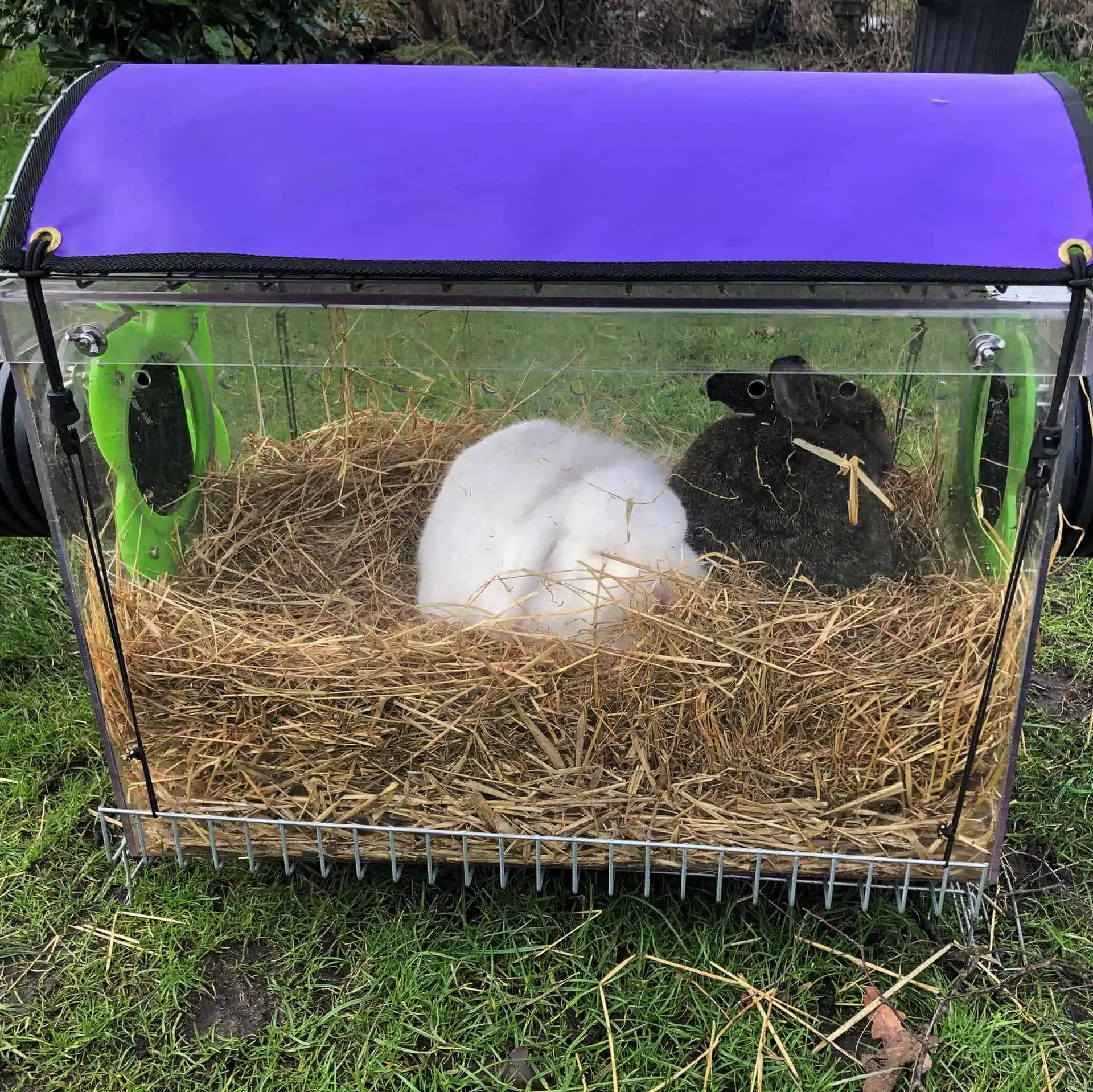
What do I do if my rabbits dig?
What to include in your rabbits’ outdoor housing
Diet
A great diet, made of 85-90% high quality feeding hay.
Companionship
These social animals need a bunny friend to spend their life with.
Behaviour
Access to lots of enrichment activities.
Health
Having an environment that doesn’t have a negative impact on their wellbeing.
Include lots of great rabbit food in their housing
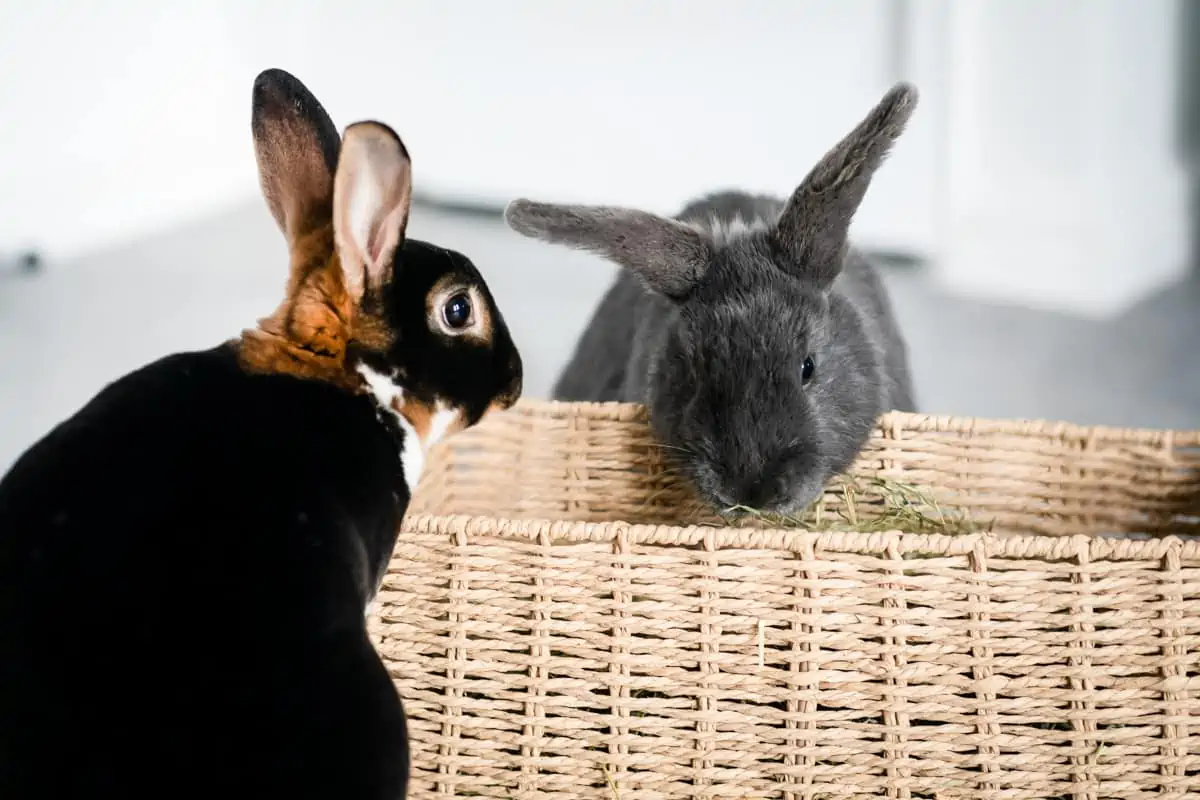
Top Tip!
Every bunny needs somebunny - rabbits should be kept in pairs or small groups
Rabbits are social animals. In the wild they’d like to live in large groups called fluffles. As pets, rabbits should live in a suitable pair or small group. Littermates often make great companions, but you can also bond two rabbits together. The key thing is that they are all neutered. Not only does this prevent unwanted pregnancies (siblings will mate!), it also decreases the risks of certain illnesses and negative behaviours.
In their housing, having a friend to cuddle up to helps to keep rabbits warm in the winter. It also provides them with a constant playmate, and someone to spend their life with.
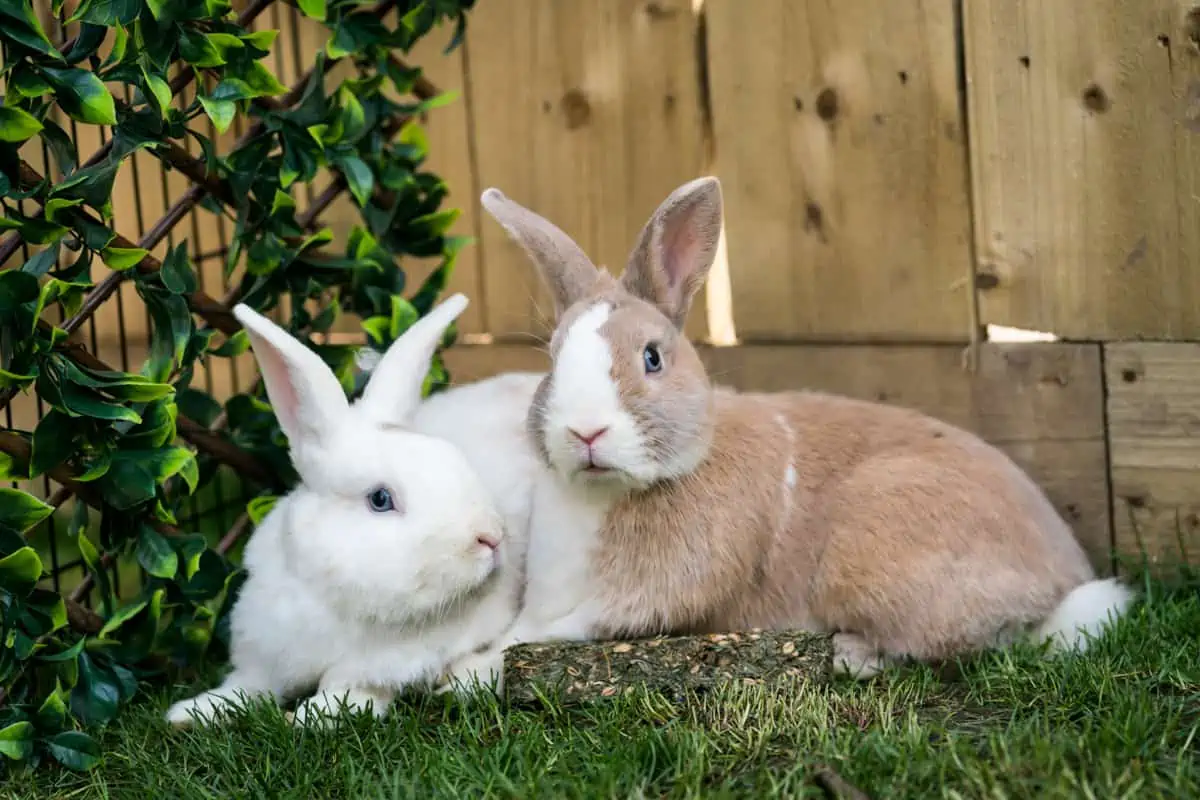
Top Tip!
Keep their minds active: Give them lots of things to play with and do
Digging
Foraging
Hiding
We can help them to do that by providing lots of enrichment within their housing. Encourage their foraging behaviours by sprinkling tasty forage through their feeding hay, or using puzzle feeders or snuffle matts.
Give your rabbits a couple of dig trays, especially if their housing is largely on hard ground, like paving stones. You can buy dig boxes, for example the Runaround Clear Dig, or use items like litter trays filled with soil.
Providing lots of hiding places is great for your rabbits. As prey animals, they will often want somewhere to hide away to help them feel secure. Use a variety of tunnels and platforms - always with two entrances/exits - to give them the space to do so. You can buy ready made rabbit tunnels online or from pet shops, or you can make your own! Cutting two holes either side of a cardboard box is a great solution. But remember! These will need replacing fairly often as your rabbits destroy it.
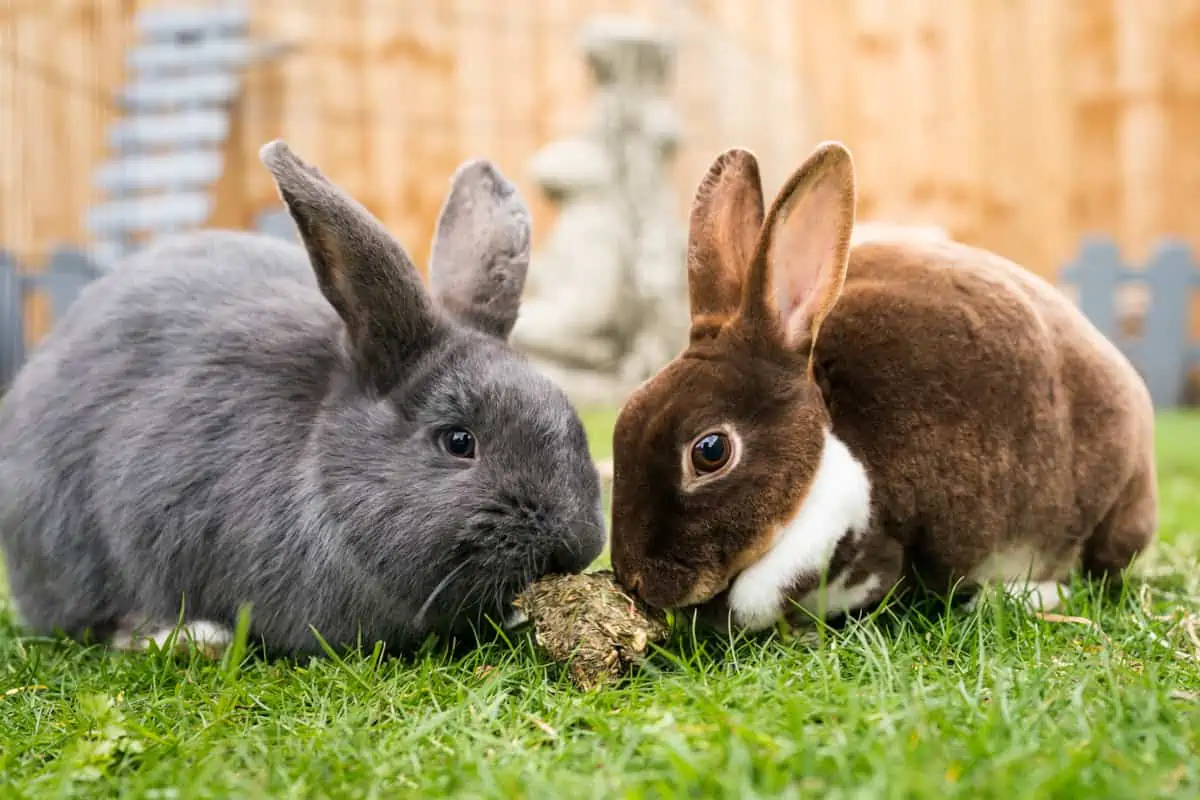
Top Tip!
Help support your rabbits’ health with a great environment
There are lots of things that contribute to your rabbits’ health but giving them a great environment can really help your rabbits stay fit and healthy. Rabbits need lots of space (at least 3m x 2m x 1m high) and this is so they have plenty of room to move. If rabbits can’t move around and exercise they are more likely to become overweight. Obesity itself can lead to a number of health problems in rabbits including heart issues, diabetes, and digestive issues. So the more room for rabbits, the better!
Cleaning your rabbits’ housing
Make sure you regularly clean your rabbits’ housing. Do a quick spot check every day and remove and replace any soiled materials, uneaten food, and water. Each week do a more thorough clean, removing and replacing all their bedding, food, and water. Keep back a small portion of unsoiled bedding material to put back in after the clean - this will help familiarise your rabbits with their newly cleaned enclosure.
Complete a thorough clean, including using a pet safe disinfectant to clean the walls and floors, at least once a month. Again, remove and replace all materials inside the housing (keeping a small amount of unsoiled bedding back to keep a familiar smell). Give their toys a good scrub and put them back in a different place or swap out the toys for new ones. This will help keep your rabbits’ space interesting for them.
